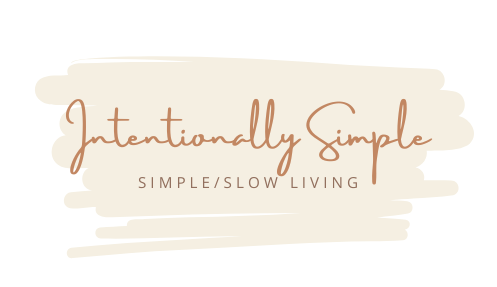Ever feel like life’s moving too fast? You’ve got a million things to do, but every time you check your to-do list, it feels longer than before. Sound familiar? What if slowing down was the answer to feeling more in control, more at peace, and actually achieving what matters most? The psychology of slow living reveals that it isn’t just about taking things slower—it’s about fostering a deeper connection with yourself and improving your mental health.
In this article, we’ll explore the psychological benefits of slow living and how it can reduce stress, alleviate anxiety, and tackle decision fatigue.
My Journey to Slow Living: Finding Peace in the Chaos
A few years ago, I was caught in the whirlwind of everyday life: work deadlines, family commitments, and the constant ping of my phone. Every morning, I would wake up already feeling behind. It wasn’t until I hit a wall—exhausted and overwhelmed—that I realized I needed a change. I started to experiment with slow living practices for mental wellness—simplifying my routines, limiting distractions, and carving out time for mindful activities. Soon enough, I noticed that I was sleeping better, thinking more clearly, and feeling a sense of calm I hadn’t felt in years.
The benefits weren’t just about slowing down—it was about taking control of my mental space.
The Psychology Behind Slow Living: How It Reduces Anxiety and Boosts Mental Health
Why does slow living have such a powerful impact on mental health? The answer lies in how our brains process stress and make decisions. Our brains are constantly bombarded with information, demands, and distractions in our fast-paced world. This overload leads to anxiety and decision fatigue. But slow living provides a simple yet effective remedy: it creates space for relaxation and mental clarity.
1. Simplifying Your Environment Reduces Cognitive Load
A cluttered space doesn’t just make you feel overwhelmed; it can increase stress levels. According to the American Psychological Association (APA), clutter contributes to feelings of anxiety and makes it harder for our brains to focus. By reducing the clutter in your home or workspace, you create a calming environment that directly impacts your mental health. Studies show that a minimalist environment reduces cognitive load and allows you to think more clearly.
Take a weekend to declutter your space. Remove items that don’t serve a purpose and organize your surroundings to promote peace and productivity.
2. Mindful Eating Encourages Presence and Reduces Stress
Mindful eating is a practice that involves focusing fully on your food, savoring every bite, and listening to your body’s hunger cues. Research from Harvard Medical School reveals that eating mindfully can lower cortisol levels (the stress hormone) and improve emotional regulation. Instead of rushing through meals, take time to truly appreciate the taste and texture of what you’re eating.
How slow living reduces anxiety and stress is rooted in practices like mindful eating, which can improve digestion and help you maintain a healthier relationship with food, reducing stress and fostering greater mindfulness.
3. Prioritizing Downtime Recharges Your Brain
Our brains are not designed for continuous work. We need rest to recharge. According to Mindful.org, taking breaks throughout the day can help reduce mental fatigue, boost creativity, and improve productivity. It doesn’t have to be a long vacation; even a 10-minute walk or a short break can refresh your mind and improve focus.
By intentionally making room for downtime, we give ourselves the opportunity to reset and come back to tasks with a clearer mind and renewed energy.
4. Reflection Reduces Decision Fatigue
Decision fatigue happens when we’re overwhelmed by the number of decisions we make daily. Research from Psychology Today shows that the brain has limited energy for making decisions, and as we deplete that energy, we struggle to make good choices. Slow living and decision fatigue are closely connected: taking time for reflection helps you make fewer, but more intentional decisions, reducing stress and making your choices more meaningful.
Try journaling daily or meditating to clear your mind and gain insight into the decisions you’re making. Reflecting regularly helps you manage your energy and decision-making capacity.
5. Setting Boundaries with Technology Protects Your Mental Space
In today’s hyper-connected world, constant notifications and digital distractions are a significant source of stress. Studies from The National Institute of Mental Health highlight how excessive screen time can contribute to anxiety and sleep disturbances. Setting boundaries with technology, such as limiting screen time, scheduling tech-free hours, or creating device-free zones, can significantly reduce anxiety and improve your mental health.
Set a specific time each day to disconnect from your devices and enjoy the peace that comes with being truly present in the moment.
Practical Steps to Embrace Slow Living: Start Today
The science behind slow living proves its effectiveness in improving mental wellness. It doesn’t require drastic changes. You can begin with small, manageable steps to experience its benefits. Here’s how to incorporate slow living into your daily life:
1. Simplify Your Environment
Take a weekend to declutter your home or workspace. Keep only what adds value to your life and removes anything that causes stress. A tidy space translates to a clearer mind.
2. Practice Mindful Eating
During meals, put away distractions like your phone or TV. Focus solely on your food and eat slowly, savoring every bite. By practicing mindful eating, you will enjoy your meals more and reduce stress in the process.
3. Schedule Breaks Throughout Your Day
Instead of working nonstop, schedule small breaks throughout your day. Even a 10-minute walk outside can refresh your mind and help you return to your tasks with more energy and focus.
4. Reflect on Your Day
End each day with a brief moment of reflection. Write down what went well and areas where you can improve. This will help you clear your mind and feel more focused the following day.
5. Create Tech-Free Time
Designate a specific time each day to disconnect from your devices. Whether it’s during meals or before bed, turning off technology can provide much-needed mental space.
Reflective Prompts: Your Slow Living Journey Starts Here
Exercise 1:
Take a moment to reflect on how fast your life feels right now. What aspects of your daily routine make you feel rushed or overwhelmed? Write down three things you could simplify or slow down today to create a sense of peace.
Exercise 2:
Spend the next week practicing one slow living practice for mental wellness—whether it’s mindful eating, decluttering, or unplugging from technology. Keep a journal of how it makes you feel each day. After a week, reflect on the changes you notice in your mental health and well-being.
Take Control of Your Mental Health with Slow Living
The psychology of slow living isn’t just a lifestyle choice—it’s a powerful tool for better mental health. By slowing down, you can reduce anxiety, tackle decision fatigue, and improve your emotional well-being. Start with one simple practice today, and witness the profound effect it has on your stress levels and overall mental clarity.
Take your first step toward a slower, more intentional life today. Try one of the slow living practices shared here and share your experience with us in the comments below. How are you simplifying your life to focus on what truly matters?
Ready to embrace a slower, more intentional life? Start today and feel the difference.


